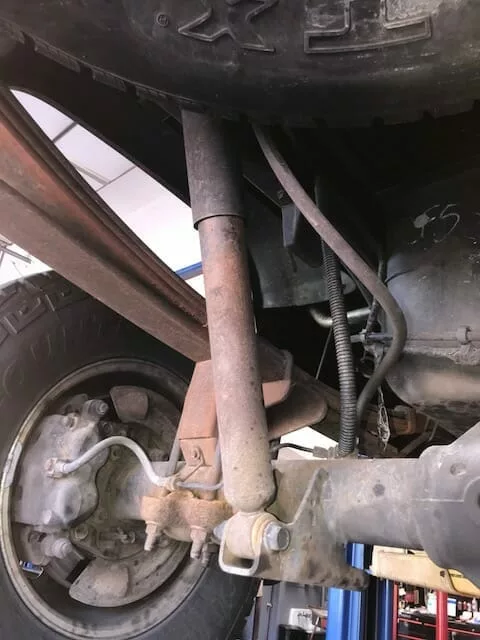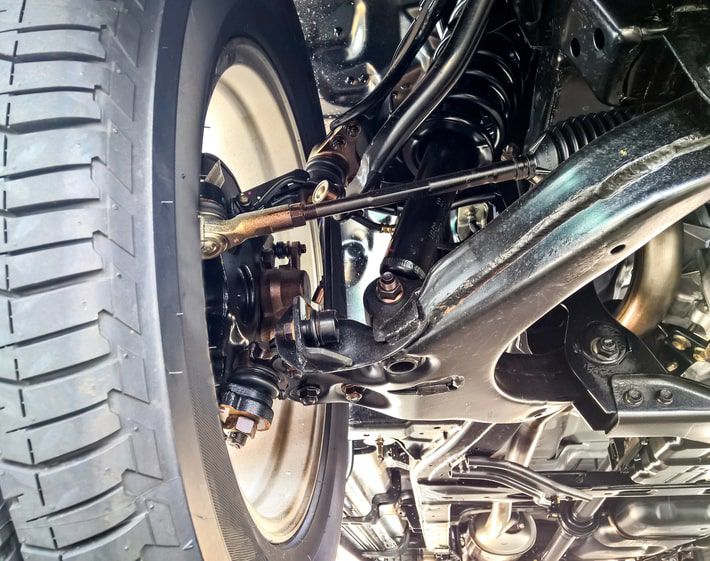Have you ever wondered about the smoothness of your car ride? When you feel every bump in the road, it might make you ask, “Do all cars have shocks and struts?”
This question isn’t just for car enthusiasts; it’s for anyone who values comfort and safety. Imagine driving on a bumpy road without any cushion—sounds uncomfortable, right? Shocks and struts play a crucial role in your vehicle’s suspension system. They ensure your ride is smooth and your car stays stable.
But not all cars are built the same. Some have shocks, others have struts, and some have both. Understanding what your car has can save you from potential headaches and expensive repairs. Keep reading to discover what your car might be missing and how it impacts your driving experience.
Car Suspension Basics
Car suspensions play a vital role in vehicle performance and comfort. They connect the car to its wheels, ensuring a smooth ride. Understanding suspension basics helps in car maintenance and troubleshooting.
Understanding The Role Of Shocks And Struts
Shocks and struts are key components in a car’s suspension system. They control the vehicle’s motion, improving stability and handling. Shocks absorb road bumps, while struts provide structural support.
How Shocks Work In A Car
Shocks dampen the impact of rough roads. They contain fluid that helps absorb energy from road irregularities. This prevents excessive bouncing and provides a smoother ride.
The Function Of Struts In Vehicle Suspension
Struts are more complex than shocks. They integrate multiple suspension parts into one. Besides damping, they also support the car’s weight and align the wheels.
Do All Cars Have Shocks And Struts?
Not all cars have both shocks and struts. Some vehicles use only shocks, while others use only struts. The choice depends on the car’s design and intended use.
Why Understanding Suspension Is Important
A well-maintained suspension ensures better driving comfort and safety. It also prolongs tire life and improves fuel efficiency. Regular checks can help detect worn components early.
Role Of Shocks In Vehicles
Shocks play a key role in vehicle suspension systems. They ensure a smooth ride by absorbing road bumps and vibrations. Shocks help maintain tire contact with the road. This enhances the vehicle’s stability and control. Without shocks, driving would be bumpy and uncomfortable. They protect the vehicle’s structure from stress and damage.
Function And Importance
Shocks control the movement of springs in a vehicle. They reduce the bounce caused by uneven roads. This improves passenger comfort and safety. Shocks also help in braking and steering. They keep the tires firmly on the ground. This ensures quick response and control. Shocks prevent excessive body roll during turns. This enhances vehicle stability.
Common Types Of Shocks
There are several types of shocks available. The most common are twin-tube and monotube shocks. Twin-tube shocks have two tubes for fluid and pressure. They are cost-effective and provide good comfort. Monotube shocks contain a single tube. They offer better performance and heat dissipation. Other types include coilover and air shocks. Coilover shocks allow height adjustments. Air shocks use air pressure for support and comfort.
Understanding Struts
Struts play a crucial role in a vehicle’s suspension system. They help absorb shocks from the road. This ensures a smooth ride. Many people confuse struts with shocks. Yet, they serve different functions. Understanding struts can enhance your knowledge about car maintenance.
Struts Vs. Shocks
Struts and shocks both manage road bumps. Yet, they aren’t the same. Struts support the car’s weight. They are part of the suspension system. Shocks only dampen movement. Struts are more complex. They combine several functions. This makes them essential for many vehicles.
Advantages Of Struts
Struts offer several benefits. They improve vehicle stability. They provide better handling. This is vital for safety. Struts also save space. They combine multiple parts. This reduces the need for additional components. Thus, they can lower repair costs. They ensure a smooth, comfortable ride.

Credit: www.kenstrans.com
Different Types Of Car Suspensions
Car suspension systems are crucial for a smooth ride. They absorb bumps and vibrations. Not all suspensions are alike. They vary based on design and function. Understanding these types helps in maintaining your vehicle.
Independent Suspension Systems
Independent suspension systems allow each wheel to move separately. This design improves ride quality and handling. It offers better traction and comfort. Common types include MacPherson struts and double wishbones. They are popular in modern cars. These systems adapt well to uneven roads.
Dependent Suspension Systems
Dependent suspension systems connect wheels with a solid axle. Both wheels move together. This setup is simple and cost-effective. It provides stability in heavy vehicles. Leaf spring and solid axle are common types. These systems are often found in trucks. They perform well on straight roads.
Shocks And Struts In Various Car Models
Shocks and struts play a vital role in a car’s suspension system. They ensure a smooth ride by absorbing road impacts and maintaining tire contact. Different car models have specific suspension needs. Let’s explore how shocks and struts vary across various car types.
Sedans And Coupes
Sedans and coupes are built for comfort and everyday driving. They often feature a suspension system focused on a balanced ride. Shocks and struts in these cars aim to enhance stability and control. This design helps in reducing road vibrations. It also ensures a quiet and comfortable drive. Many sedans and coupes have independent front suspension. This setup allows better handling and smoother turns.
Suvs And Trucks
SUVs and trucks need robust suspension systems. They are designed for heavy loads and off-road conditions. Shocks and struts in these vehicles are often more durable. They can withstand rough terrains and heavy-duty tasks. Many SUVs and trucks feature a solid rear axle suspension. This provides strength and durability for off-road adventures. The suspension system in these vehicles focuses on load capacity and rugged performance.
Sports Cars
Sports cars prioritize speed and agility. Their suspension systems are tuned for high performance. Shocks and struts are often stiffer and more responsive. This allows the car to handle sharp turns and quick maneuvers. Low-profile tires complement the suspension for better road grip. The design ensures maximum control at high speeds. Sports cars often use advanced suspension technologies. These include adaptive or electronic systems for optimal performance.
Maintenance Tips For Shocks And Struts
Maintaining shocks and struts is crucial for a smooth ride. These components absorb road bumps and keep your car stable. They need regular checks to perform well. Neglecting them can lead to rough rides and safety issues. Proper maintenance can extend their lifespan. It ensures your vehicle handles well.
When To Replace
Replace shocks and struts every 50,000 to 100,000 miles. This depends on driving conditions and habits. Frequent off-road driving may wear them out faster. Listen for unusual noises. If the ride feels bouncy, replacement may be needed.
Signs Of Wear And Tear
Look for oil leaks around shocks and struts. Check for uneven tire wear. This signals poor suspension function. Notice any swaying during turns. This may indicate worn-out components. Pay attention to how the car handles bumps. A rough ride often means wear and tear.
Impact On Driving Experience
Shocks and struts improve comfort and stability, ensuring smooth rides. Without them, driving becomes bumpy and uncomfortable, affecting control. Most cars are equipped with these components to enhance safety and performance.
When you slide behind the wheel, the driving experience often depends on more than just speed or style. Shocks and struts play a vital role in how your car handles the road. They affect everything from comfort to safety and performance. Have you ever wondered how these components shape your daily drive? Let’s dive into their impact on your driving experience.Comfort And Safety
Imagine cruising down a bumpy road, and your car absorbs every jolt. That’s the magic of well-functioning shocks and struts. They soften the blow from potholes and uneven surfaces, ensuring a smoother ride for you and your passengers. Safety is also enhanced because these components keep the tires firmly on the ground, improving traction. You can feel more secure knowing your car is stable, reducing the risk of accidents. Have you ever felt your car skid? Shocks and struts are working hard to prevent that.Handling And Performance
Shocks and struts significantly influence how your car maneuvers. They help maintain control around sharp corners, providing a balanced driving experience. You may notice that your car feels more responsive and agile, especially when making sudden turns. Performance isn’t just about speed; it’s about precision. Shocks and struts ensure your car responds accurately to your steering, making it feel like an extension of you. Have you tried driving without this control? It’s like steering a ship in a storm—unpredictable and stressful. Think about the last time you drove through winding roads. Did your car hug the curves effortlessly? If yes, thank your shocks and struts. They are the unsung heroes in your car’s handling, enhancing your overall driving pleasure. In essence, shocks and struts are crucial for a comfortable, safe, and high-performing drive. Next time you’re on the road, take a moment to appreciate their role in shaping your experience. Have you ever taken them for granted?
Credit: knowhow.napaonline.com
Innovations In Suspension Technology
Suspension technology in cars has come a long way. Engineers constantly work on making rides smoother and more comfortable. Shocks and struts are common in many vehicles. But new technologies are emerging to improve suspension systems. These innovations offer better control and comfort for drivers and passengers.
Adaptive And Active Systems
Adaptive suspension systems adjust to road conditions. They change based on speed, bumps, and turns. Sensors detect these changes in real-time. The system then adjusts the suspension to provide a smoother ride. This technology helps reduce body roll in corners. It also improves safety by maintaining better tire contact with the road.
Active suspension systems go a step further. They use motors and actuators to control suspension movement. This allows the car to react instantly to changes. The result is improved stability and comfort. Active systems are common in luxury and high-performance cars. They provide a premium driving experience.
Future Trends
The future of suspension technology looks exciting. Electric and autonomous vehicles will drive new innovations. These cars require different suspension solutions. Engineers are exploring electromagnetic suspensions. These use magnets to control movement without traditional springs or shocks. The result is a smoother and quieter ride.
Connected cars will also play a role. These vehicles can share data about road conditions. This information helps the suspension system prepare for upcoming bumps or curves. The goal is to create a seamless driving experience. As technology advances, expect more changes in suspension systems.

Credit: www.tiresplus.com
Conclusion
Shocks and struts play vital roles in car suspension systems. Not every vehicle has both. Some cars use only shocks, others rely on struts. Design choices depend on driving needs and vehicle models. Shocks and struts impact comfort and handling.
Understanding these components helps in maintenance. Regular checks ensure smooth and safe rides. Car owners should learn about their vehicle’s system. This knowledge aids in making informed repair decisions. It also helps in choosing the right replacement parts. Proper maintenance extends vehicle life and performance.
Safe travel starts with well-maintained suspension components.
